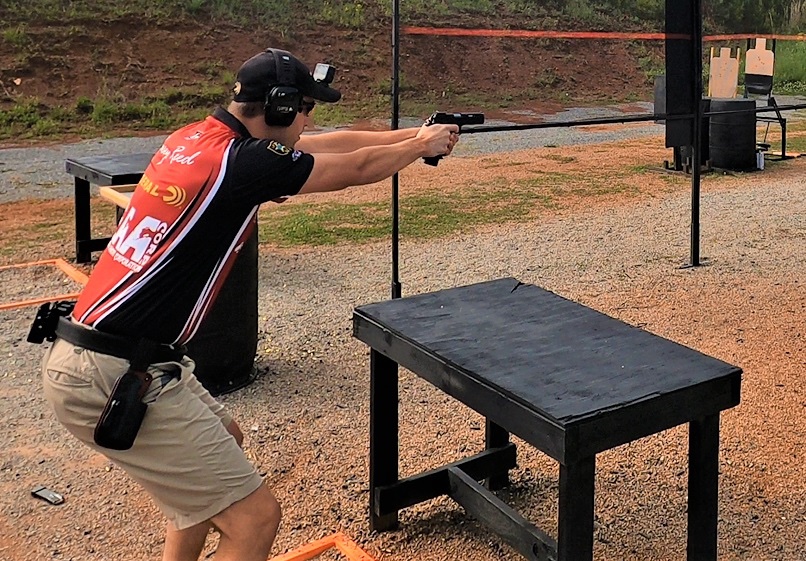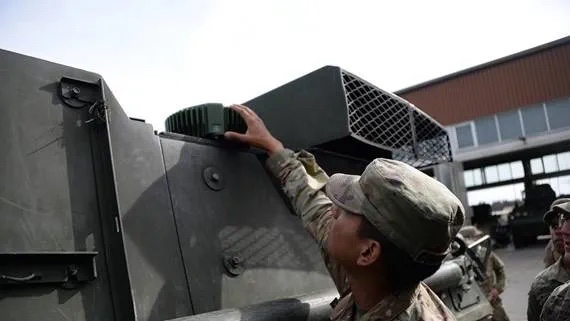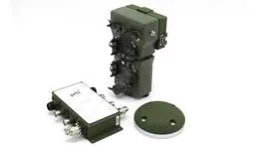
Atlas Devices has launched a blog series. Their first entry is “Enemy of Vertical: TERRAIN” which takes look at the types of challenges facing electrical linemen.

Atlas Devices has launched a blog series. Their first entry is “Enemy of Vertical: TERRAIN” which takes look at the types of challenges facing electrical linemen.

ANOKA, Minnesota – May 11, 2021 – Team Federal congratulates Austen Smith on a gold medal performance at the ISSF World Cup being held in Lonato Del Garda, Italy. In a tune up for the Olympics later this summer, Smith bested a field of sixty competitors from all over the world in the Women’s Skeet event on Monday, May 10. The teenager from Texas downed Amber Hill from Great Britain in the final busting 55 out of 60 targets versus Hill’s 52.
2-Time Olympic Champion Vincent Hancock claimed a silver medal in the Men’s Skeet competition of the ISSF World Cup falling one target short of first. Hancock advanced to the finals in the one-hundred and twelve contestant field but in the finals, Egypt’s Azmy Mehelba turned in a 56 out of 60, one target better than Hancock’s 55. With Hancock’s silver medal performance, the USA now leads in the medal count.
There are more medals to be claimed in the ISSF World Cup Shotgun event with Men’s and Women’s Trap as well as Trap Mixed Team titles to be claimed. Watch for more results from Federal Ammunition sponsored shooters including Derrick Mein, Brian Burrows, and Kayle Browning as they tune up for Olympics.
www.issf-sports.org/competitions/venue/results
Federal ammunition can be found at dealers nationwide or purchased online direct. For more on Federal ammunition, visit www.federalpremium.com.

ANOKA, Minnesota – May 12, 2021 – Federal Ammunition employee, competition shooter and brand ambassador Casey Reed finished strong with third place honors in the Limited 10 Division at the recent 2021 United States Practical Shooting Association (USPSA) Lo-Cap National Championship. The competition was held at the CMP Marksmanship Park in Talladega, Alabama on May 7 to 9. Reed is an employee of Federal Ammunition who works as a Handgun Product Development Engineer.
“The USPSA staff did a fantastic job designing and executing a match that challenged all the competitors to find that perfect balance between speed and accuracy,” said Federal Shooting Sports Promotions Manager Jason Spradling. “Casey was able to pull off three consecutive days of elite performance and earn a third-place finish in a division stacked with world-class shooters. His dedication and hard work continue to make him one of the best competitive shooters in the game. We’re extremely proud of Casey’s performance and his reputation as an ambassador for the Federal brand and the company he works for.”
From the 53 shooters in the Limited 10 Division, Reed took 3rd place honors. Of the 403 total shooters, competing in 20 stages, he finished 8th overall.
“I had a great performance to start off the 2021 USPSA season,” said Reed. “The Syntech Action Pistol Ammo was right in the sweet spot for power factor and allowed me to have a strong finish in Limited 10 Nationals and throughout the entire match.”
Reed used Syntech Action Pistol 40 S&W, 205-grain ammunition at this event. Federal also offers Syntech Action Pistol in 9mm Luger, 150-grain and 45 Auto, 220-grain. Designers configured the loads to meet the accuracy, reliability and power factor requirements of shooters who compete in the International Practice Shooting Confederation (IPSC) and United States Practical Shooting Association (USPSA).
Federal Ammunition is a sponsor of the USPSA, and Syntech Action Pistol is the official sponsored ammo of the organization, with their logo on the box. Learn more about the USPSA at www.uspsa.org.
For more information on all products from Federal or to shop online, visit www.federalpremium.com.

Increasing electronic warfare threats drive U.S. Army demand for the first fielded Mounted Assured PNT System.
COLORADO SPRINGS, Colo. – GPS Source, a subsidiary of General Dynamics Mission Systems and the only provider of a currently fielded Assured Positioning, Navigation and Timing (APNT) solution available to the U.S. Army, announced today it has received an order for the 1,000th Mounted APNT System (MAPS), Generation I (MAPS GEN I).
MAPS GEN I is a mobile modular system that monitors GPS signals for validity and sends the validated data to military devices, even when GPS signals are degraded or denied. This system has been in rapid development, production, and fielding since the recognition of the critical need to protect GPS signals against peer and near-peer adversary electronic warfare attacks. It is the only mounted assured PNT solution allowing warfighters to conduct mobile operations in a GPS-contested environment.

The Army fielded the MAPS GEN I system in the fall of 2019, making it the first APNT solution to market. The Army deployed 62 systems and several systems engineers to the 2nd Cavalry Regiment in Germany for installation and continued testing. Based on successful installation and performance of these systems and over 40 previously deployed systems, the Army’s Project Manager Positioning, Navigation, and Timing submitted orders for more than 930 additional systems to be installed in ground vehicles in 2021.
“The MAPS GEN I that is being fielded today closes a critical capability gap for the U.S. Army in major areas of responsibility around the world,” said Aaron Mebust, vice president and director for PNT Products at General Dynamics Mission Systems. “We are proud to deliver this capability to the Army and are working to develop new capabilities to combat these evolving threats and help keep our soldiers safe.”
Prior to testing and deploying MAPS GEN I, the Army used other GPS Source products, having previously fielded the D3 (DAGR Distributed Device) PNT hub and the ECHO-II GPS indoor retransmission smart amplifier, and thousands of military grade components to receive disseminate and rebroadcast GPS data. Since 2000, GPS Source has provided GPS distribution and validation equipment to the U.S. military.
More information about the MAPS GEN I and other APNT solutions developed by GPS Source is available at www.gpssource.com.
SOFWERX, in collaboration with USSOCOM PEO SOF Digital Applications (PEO SDA), will host an event to be held 07 July 2021 to identify technologies for geospatial survey collection, production, dissemination, and continuous innovation of the existing data-centric, software-intensive system.
This activity is an Assessment Event (AE) under USSOCOM Commercial Solution Opening (CSO) for Mission Support Systems. Potential prototype projects will be directly relevant to enhancing the effectiveness of software-intensive programs, platforms, components, algorithms, or processes for Integrated Survey Program (ISP) Digital Transformation. The CSO and AE will result in award for solution(s) for innovative commercial technologies through a multi?phased, competitive process.
Objectives
• Exterior 3D Capture including sUAS Technologies
• Interior 3D Capture including Terrestrial LiDAR Scanning
• Interior Mobile Collection
• 5G-enabled Cloud Computing
• Network Dissemination
• 3D Model Compression
• Game Design / Interactive 3D
• Enterprise Services & DevSecOps Pipeline
Interested parties must submit NLT 14 June 11:59 PM ET, visit events.sofwerx.org/isp for details.
Black Triangle has teamed up with Tactical Distributors to release a limited edition Desert Tiger Stripe version of their Midnight Creeper.

The MK1 Mod 2 is the next-generation of Black Triangle’s non-metallic letter opening tools. Crafted form G1o the over all length is 7″.
For carry, it comes with a Kydex sheath in DTS pattern.
www.tacticaldistributors.com/products/black-triangle-x-td-dts-midnight-creeper-mk1-mod2